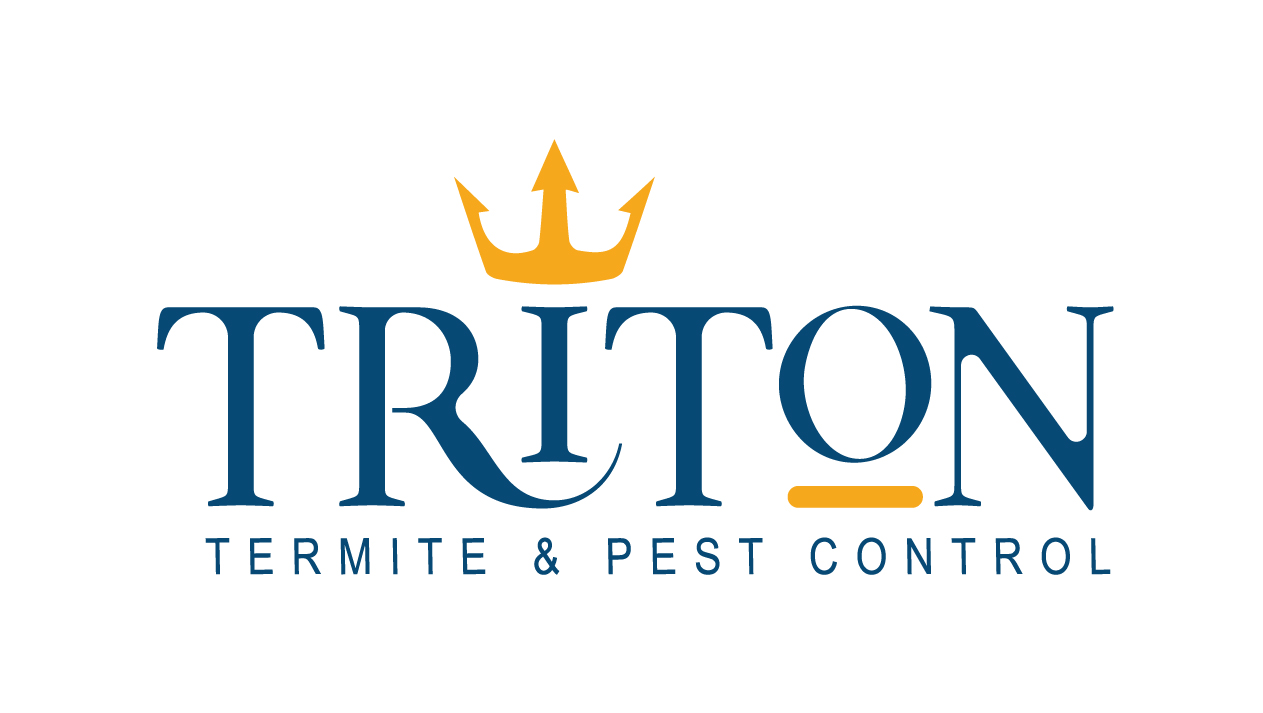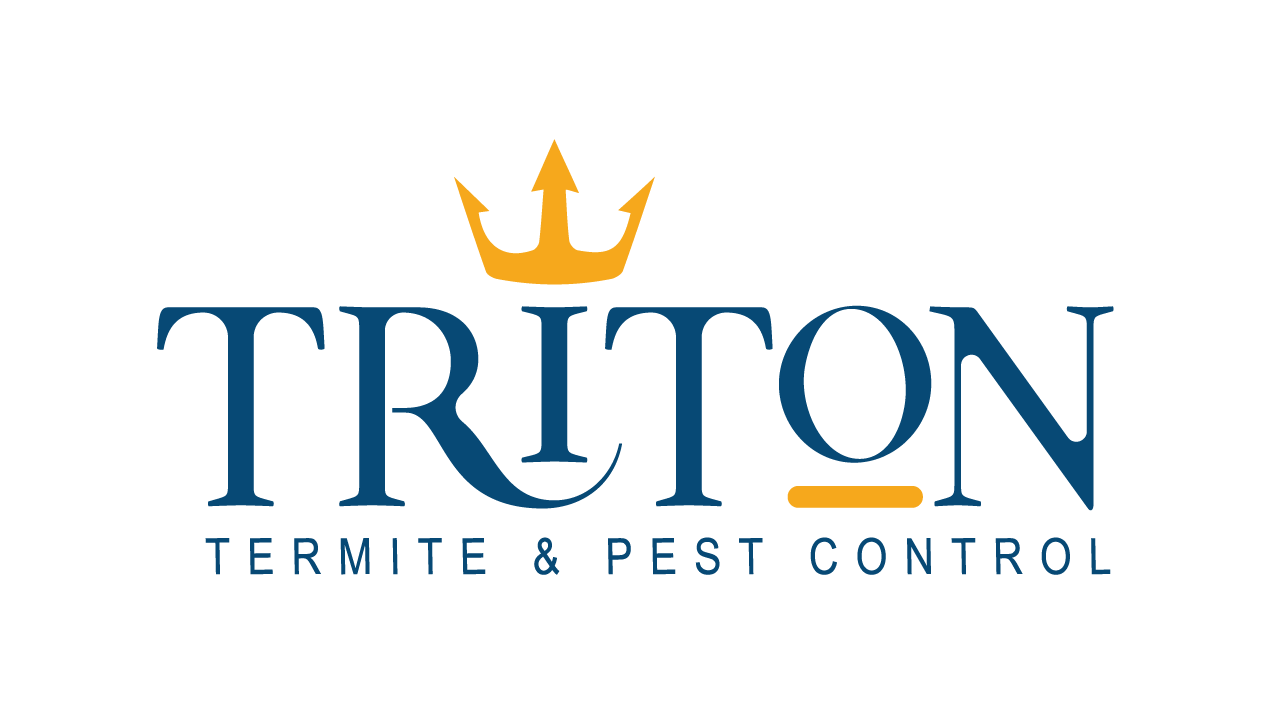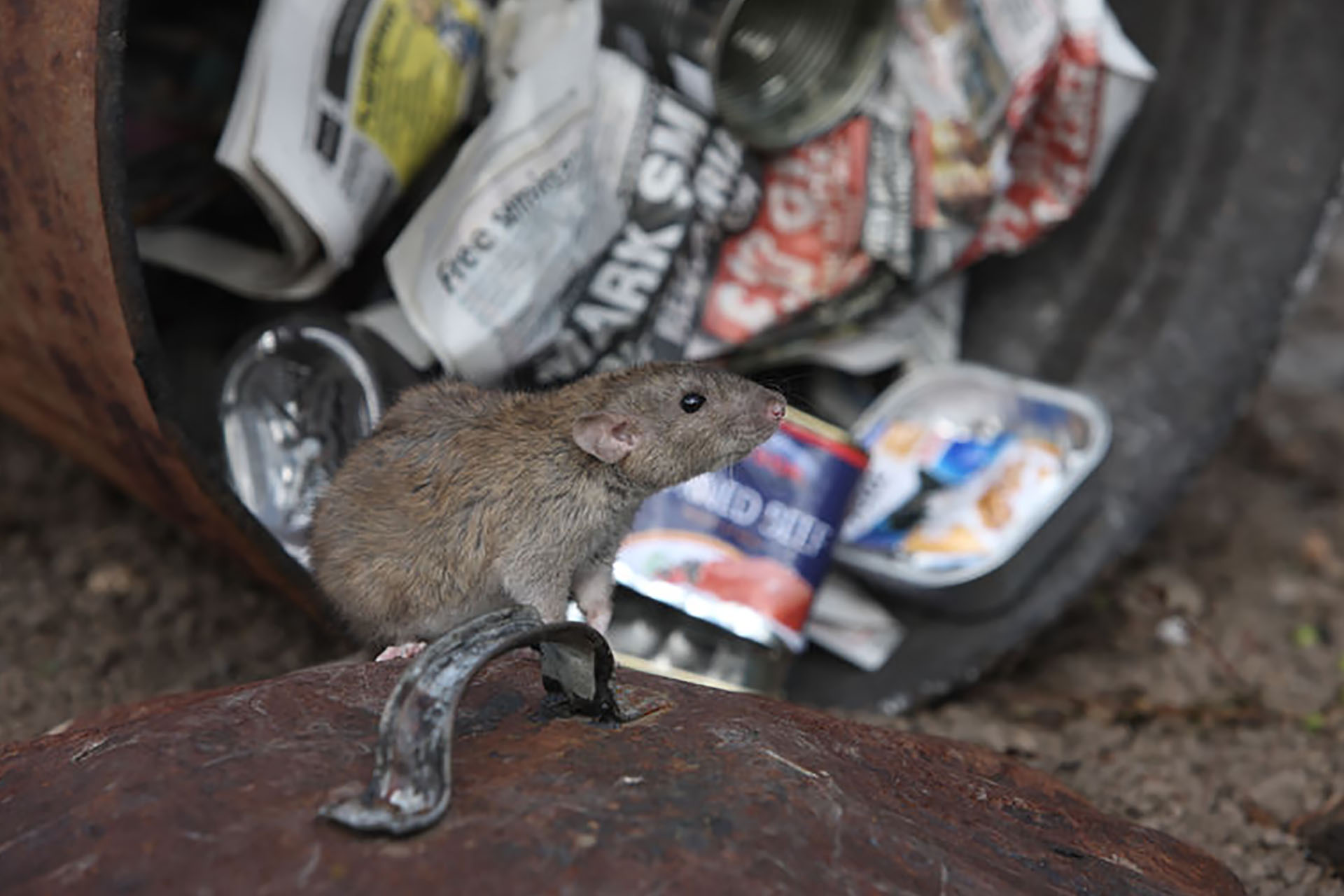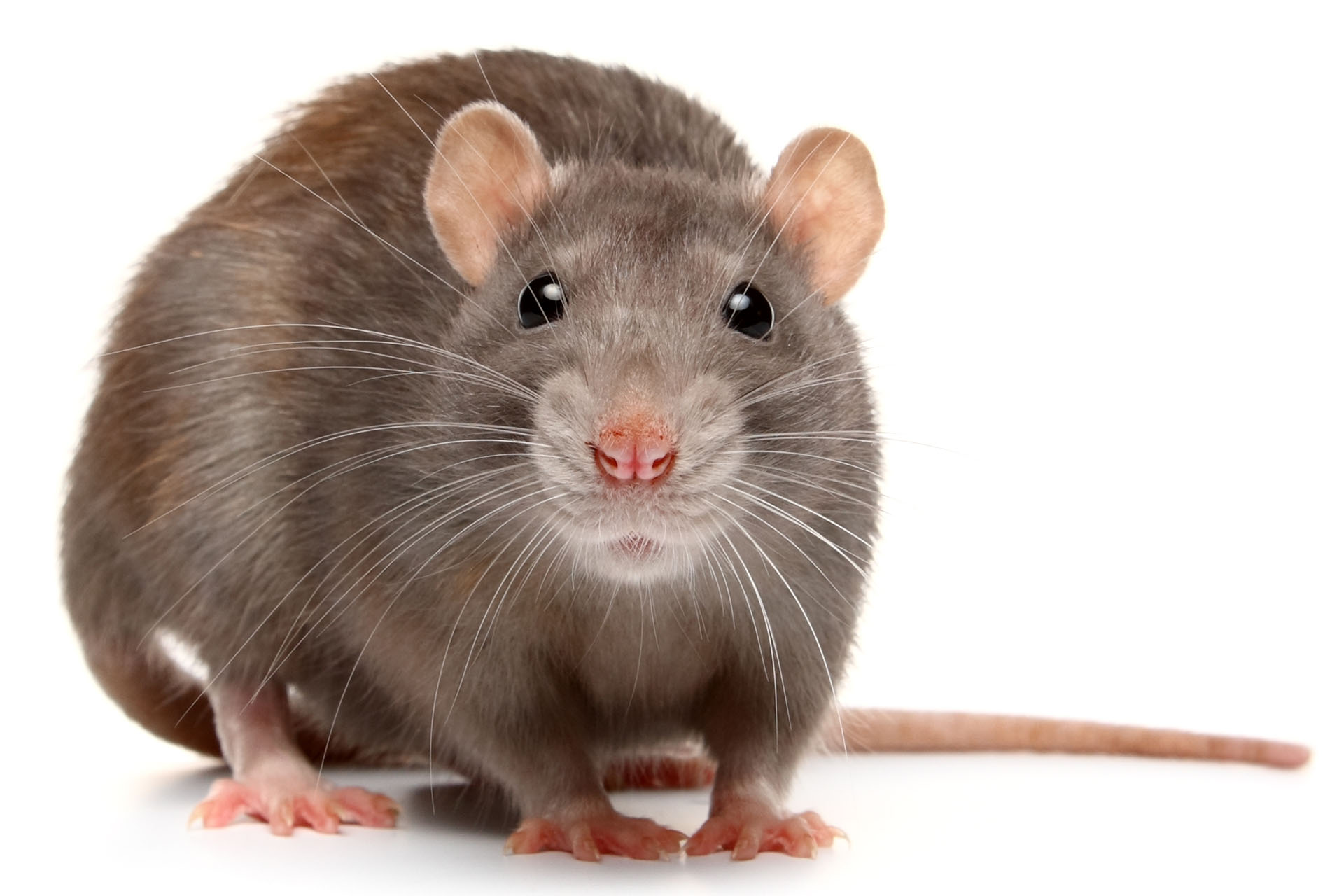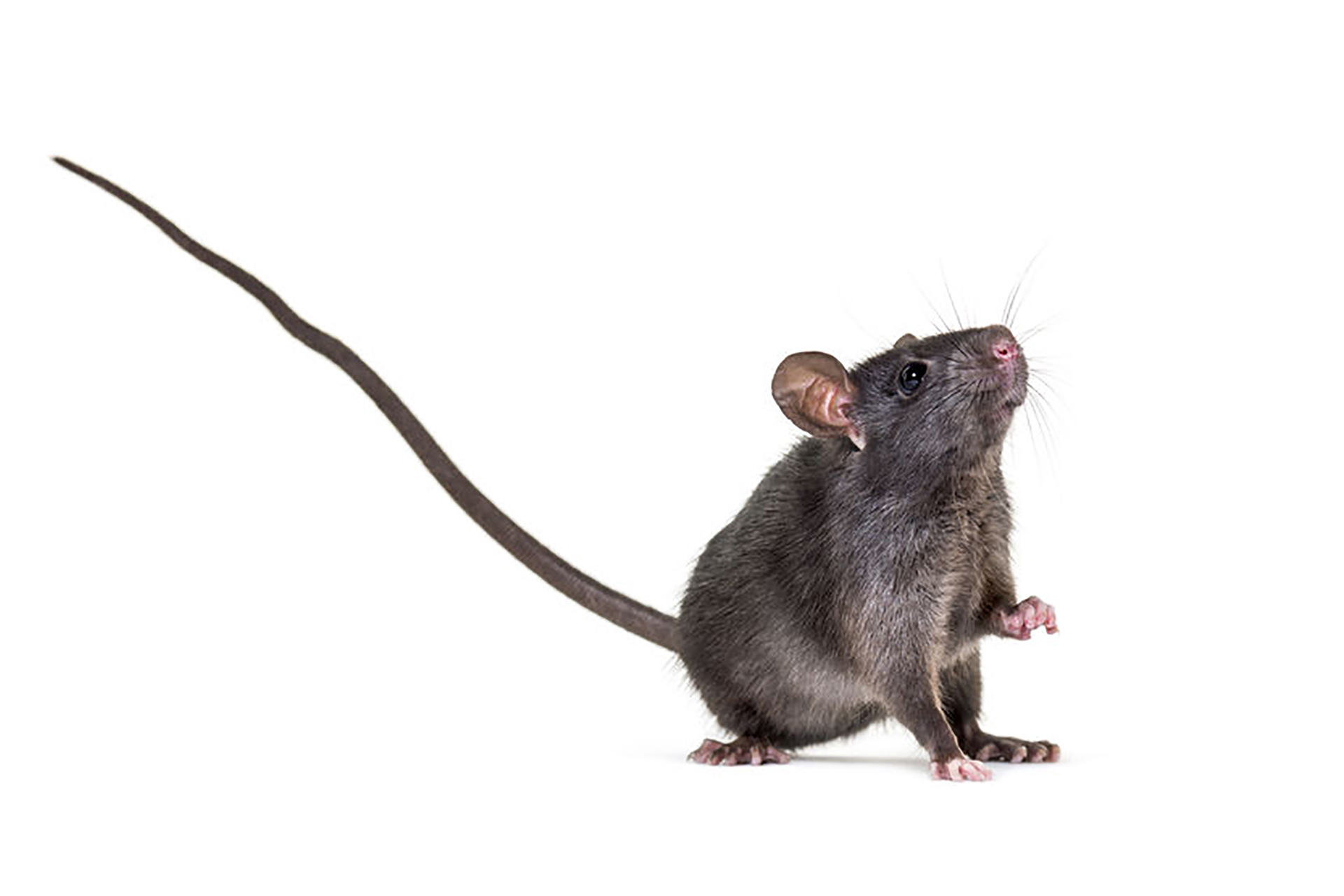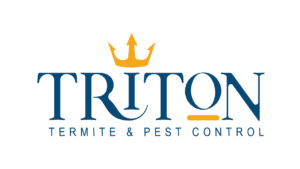What are rats?
Rats are social and tend to live together in groups or “colonies”. Including their tail, rats grow to between 15 and 17 inches long. The fur covering their body is grey, brown, or black, with a lighter-colored belly. They have large heads and feet proportional to their body. A rat’s tail is long, scaly, and void of hair. Rats are medium-sized rodents, and like all rodents, have continuously growing front incisors. Their teeth are large, sharp, and capable of causing damage to any object they gnaw on.
